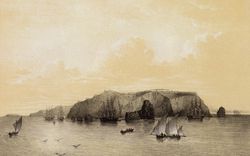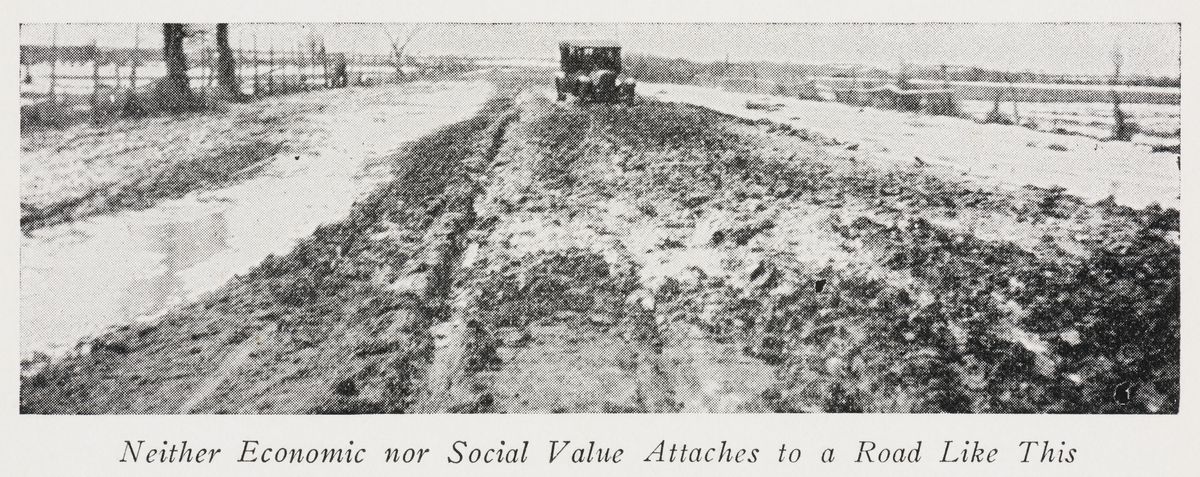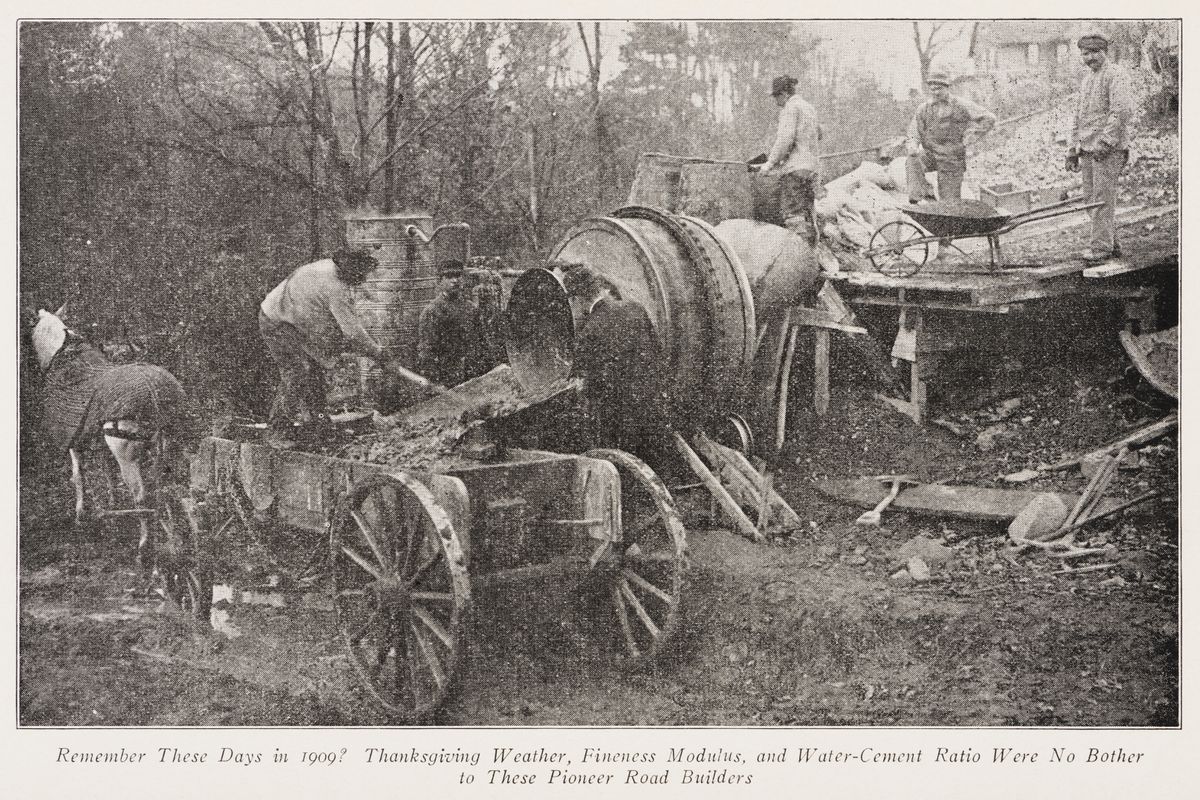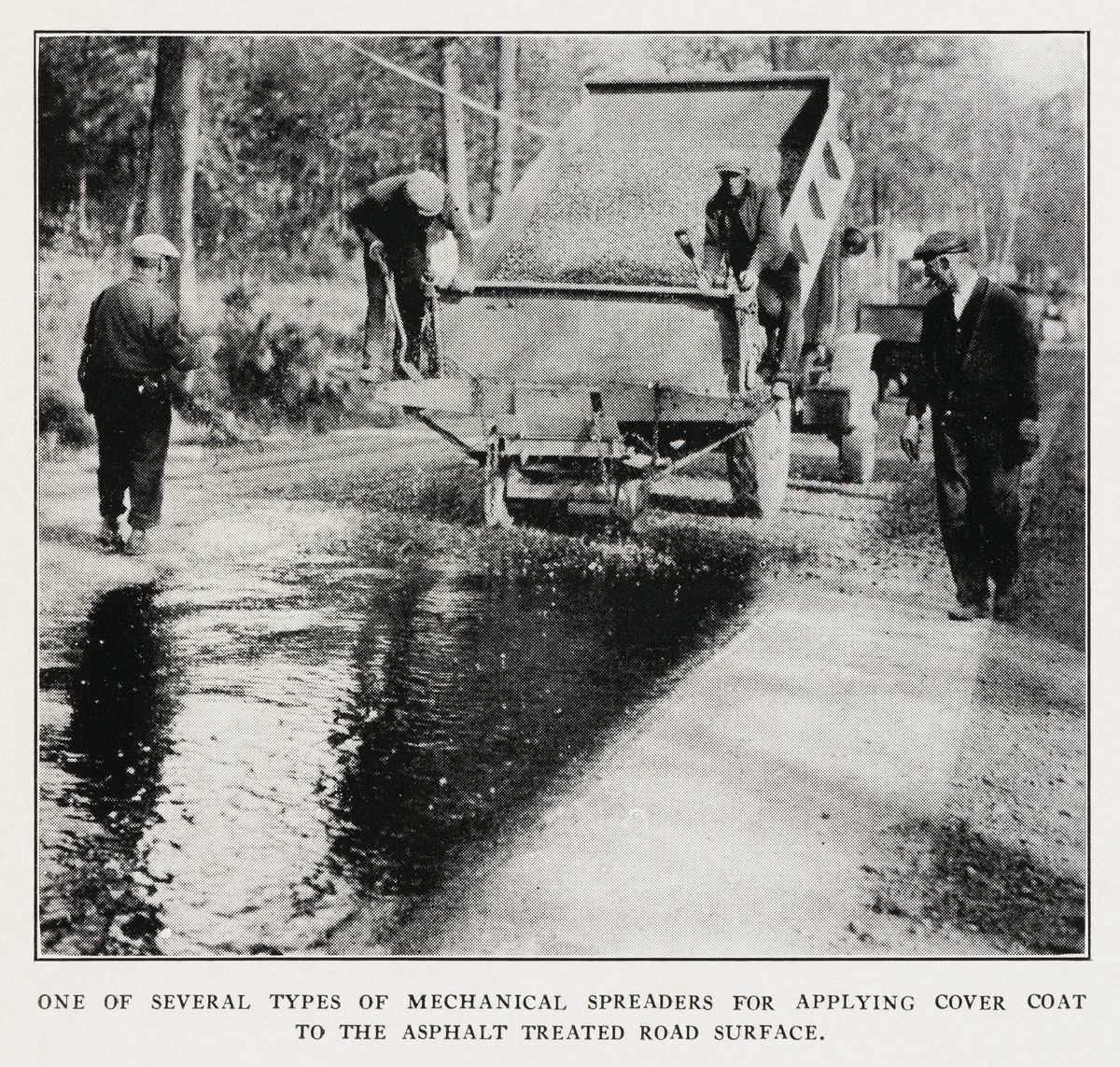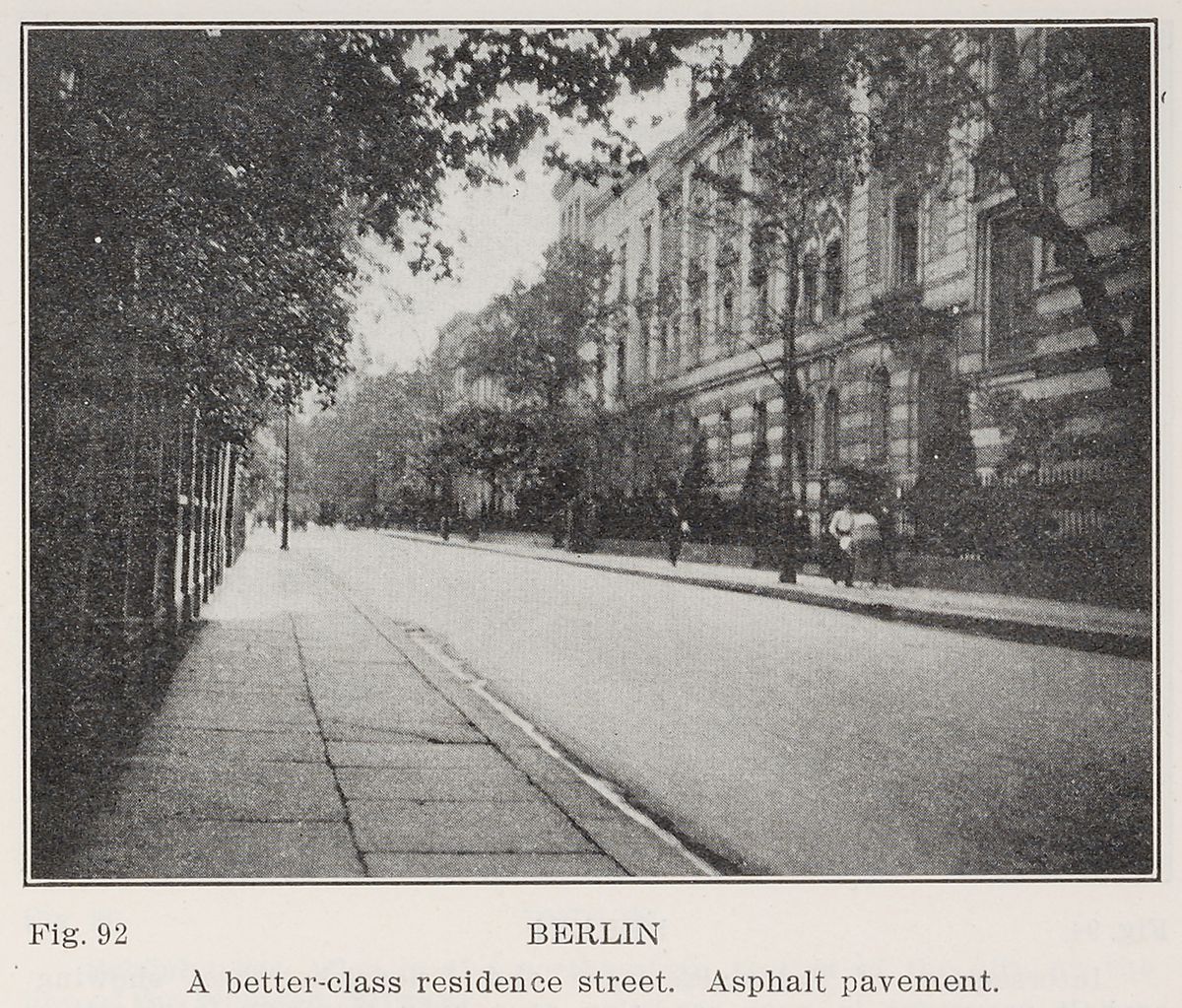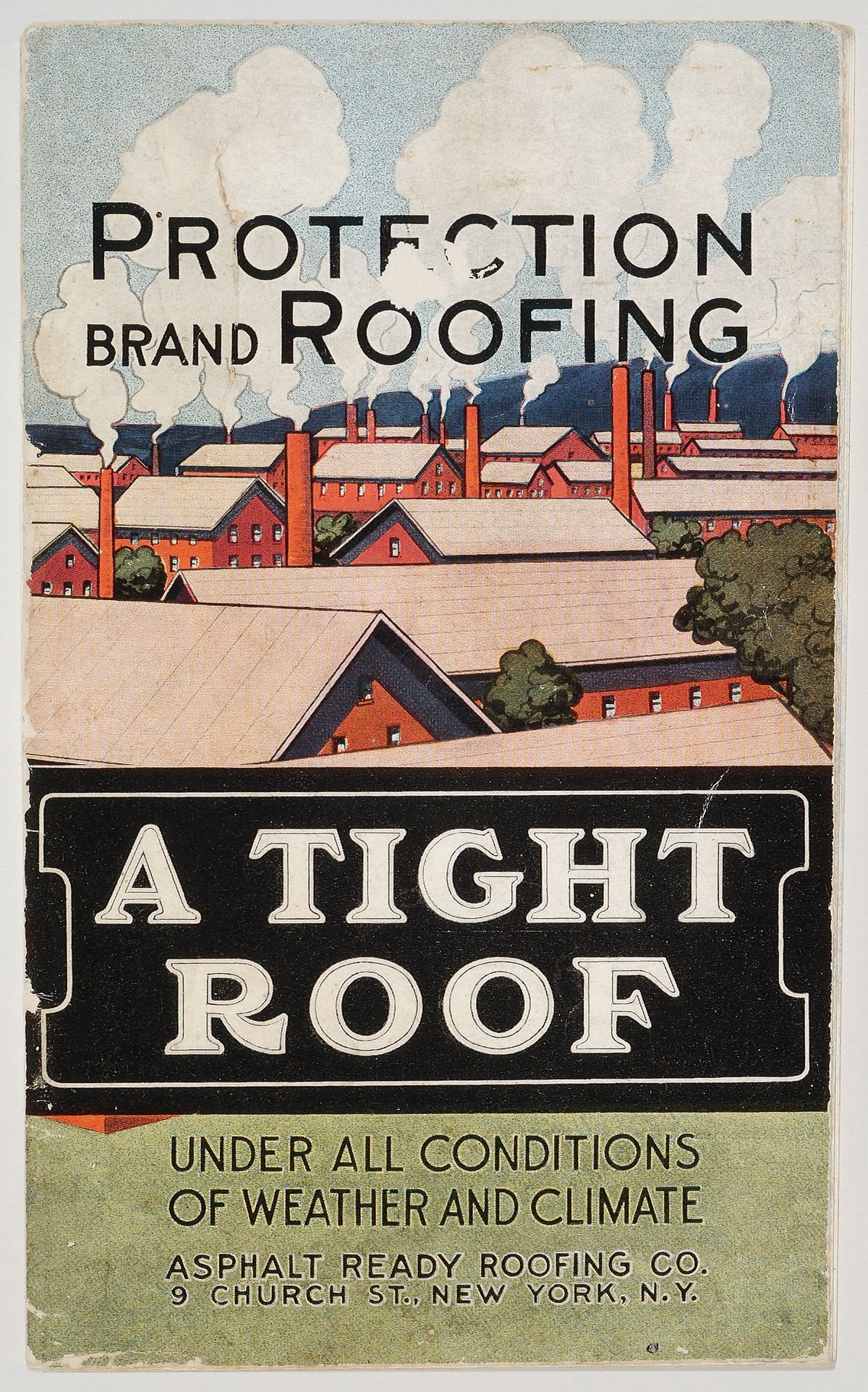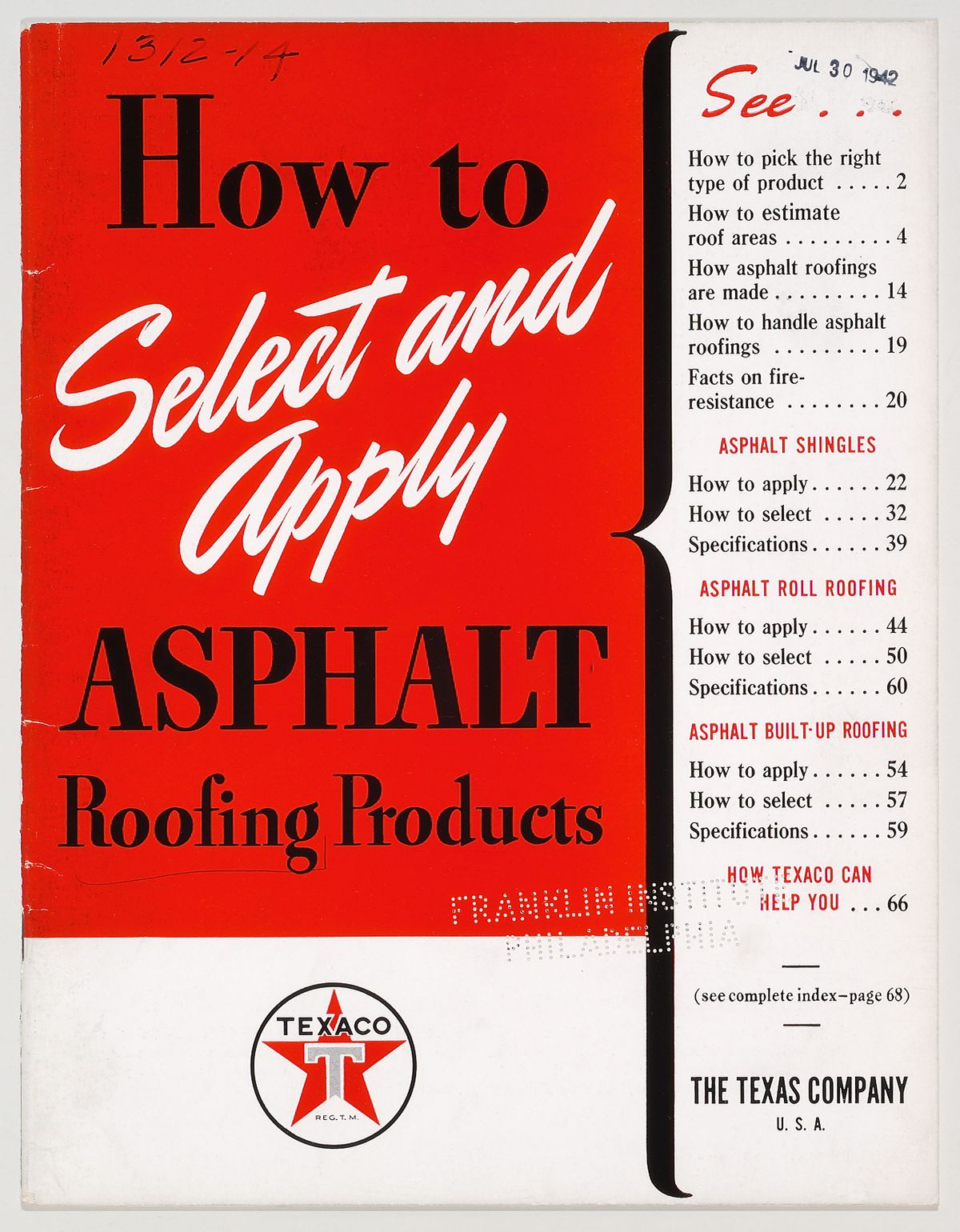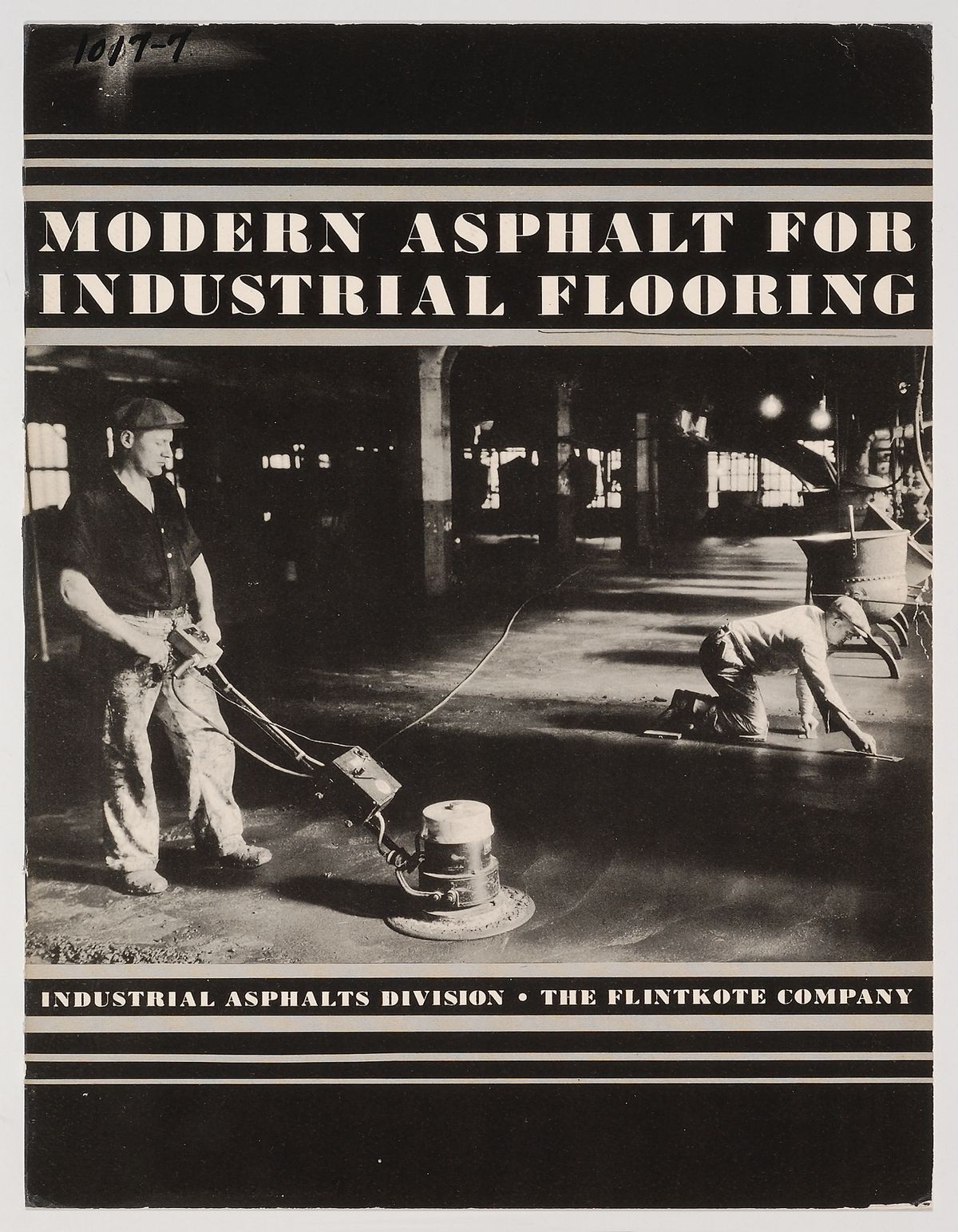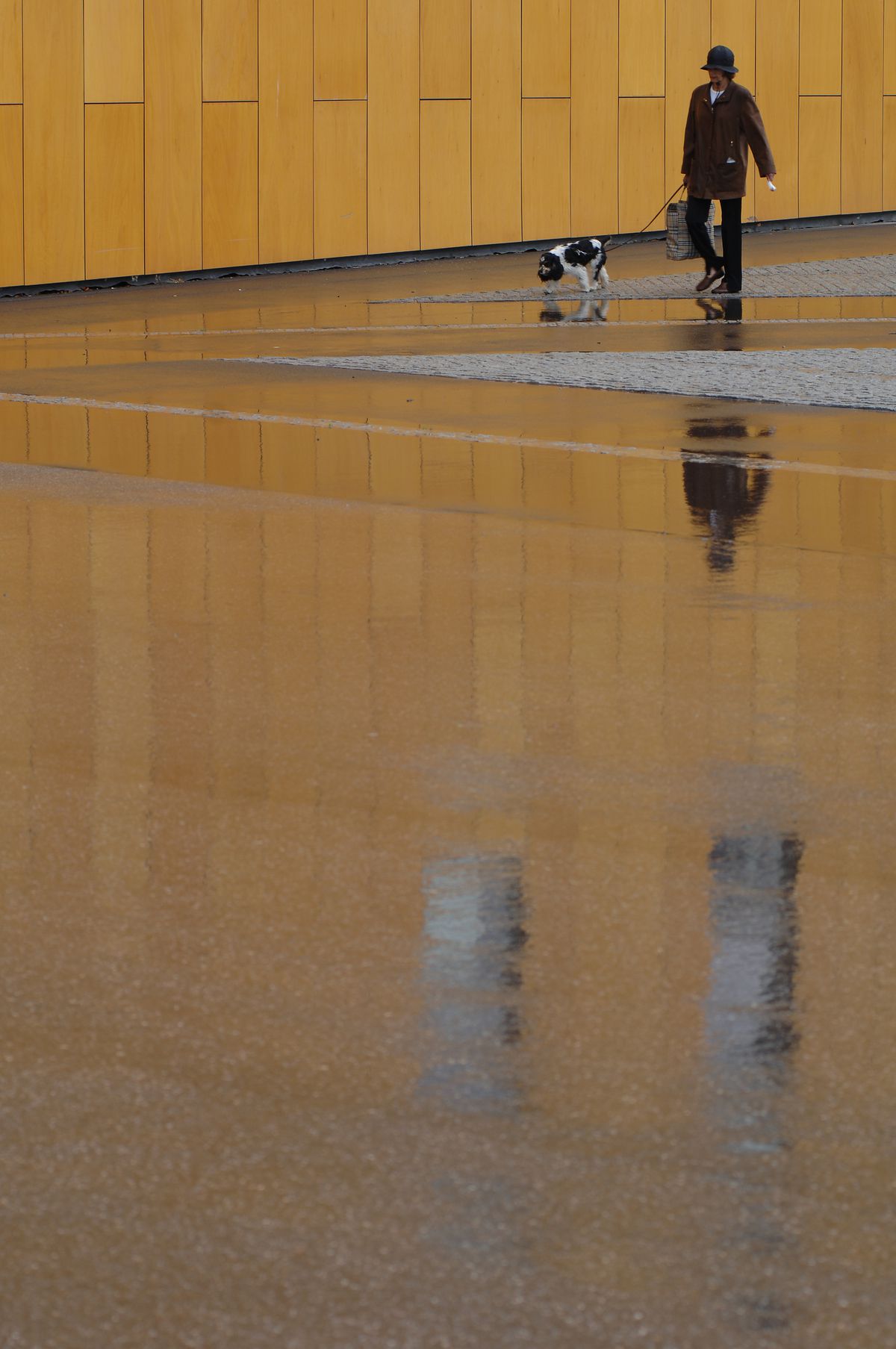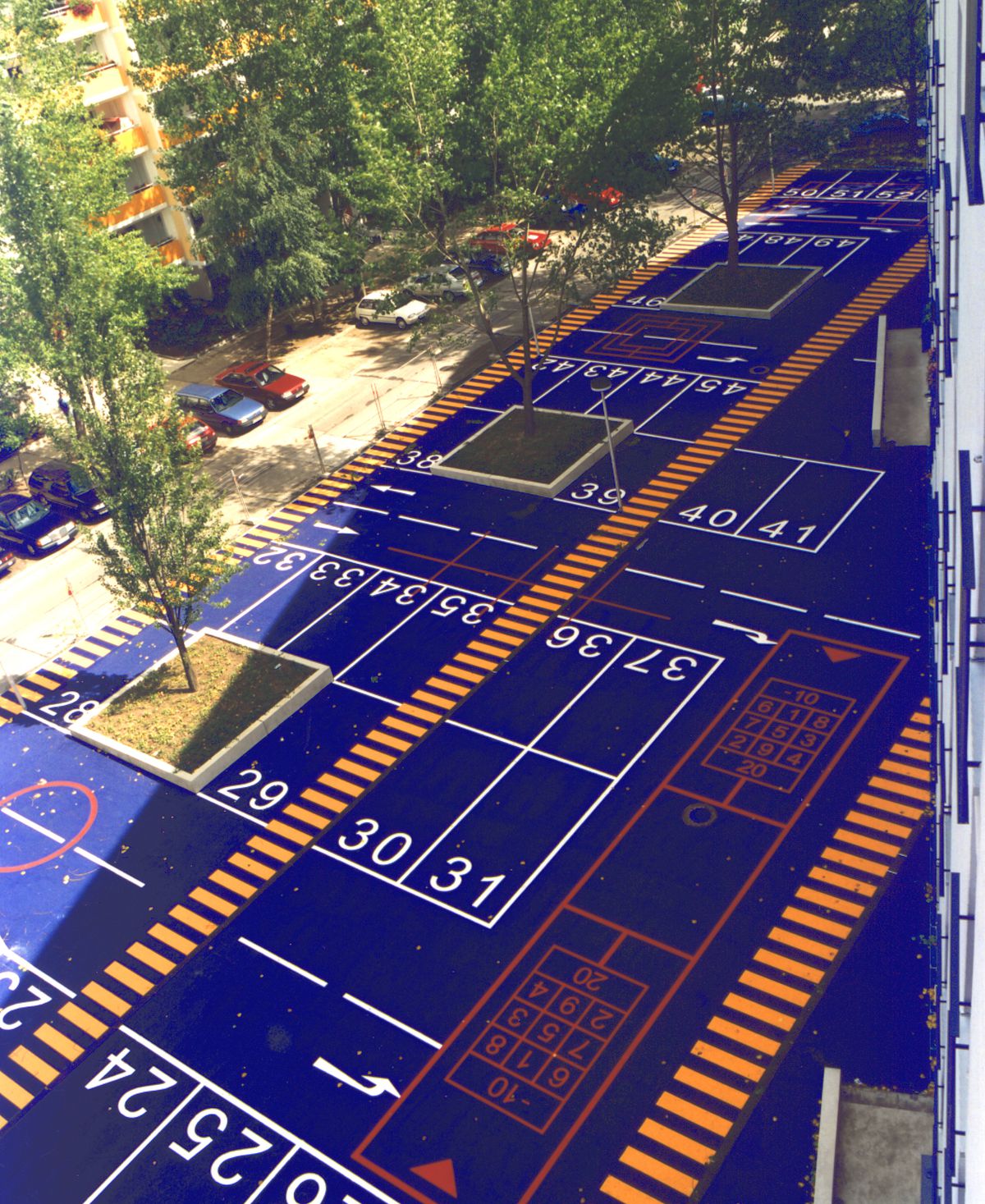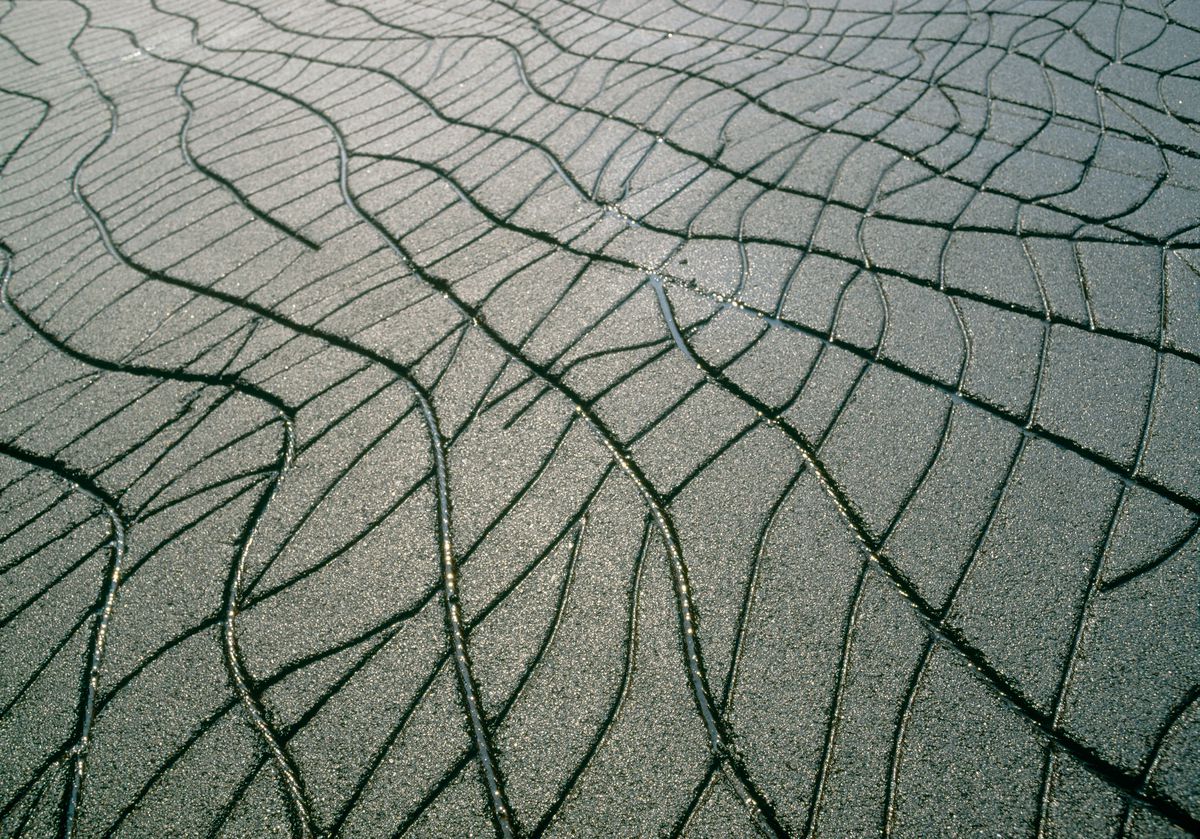The Second Crust
Text by Mirko Zardini
Saint Jerome, who in the Catholic tradition is the protector of librarians, archivists, and students, among others, wrote in one of his letters that “Non sunt contemnenda quasi parva, sine quibus magna constare non possunt (Things must not be despised as trifles, if without them great results are impossible).”1 These words have been invoked in a number of pedagogical texts, philological studies, and histories. We find them quoted, for example, at the beginning of Lynn White Jr.’s Medieval Technology and Social Change, published in the early 1960s.2 In a book that offers us deep insight into medieval society and the origins of feudalism and chivalry, the starting points for White’s investigation are saddle and stirrup, plough and horse, and the horizontal water wheel—the simplest of things. Asphalt could be said to belong to Saint Jerome’s category of “quasi parva,” minor things. It is a mixture of humble materials—bitumen, sand, and stones—and only a few centimetres deep at that. But if we focus our gaze on this “minor” phenomenon, we instantly discover how rich these few centimetres are in information, narratives, and ultimately, significance.
In reality, using the word asphalt to describe the material that now paves most of the earth is a great oversimplification. We ought to more carefully distinguish the various types of asphalt on which we drive automobiles, pedal bicycles, and walk. From country to country, and sometimes from city to city or street to street, asphalts, or bituminous macadams, as they are called, differ widely in their composition. They also vary in their colouration according to the type of stone used, but sometimes also by purposeful de-colouration of bitumen to achieve an aesthetic effect. Asphalts are distinguished by the size of particles of crushed stone used to make them, for example, to allow water to filter through and thus prevent sheets of water from forming on highways. They also vary in section, depending on the stresses to which they are subjected, whether cart, bicycle, automobile, truck, aircraft, or even just foot traffic. And they differ in terms of methods of production and application, as well as the types of bitumen used to make them. The asphalts that covered first the sidewalks and then the streets of European and American cities from the 1820s onward, beginning with Paris and London, were obtained from natural deposits. In fact, it was not until the end of the nineteenth century, in the United States, that bitumen was first produced from the industrial refining of crude oil. However, even today, some of the bitumens used in the preparation of asphalt are of natural origin, made from stone quarried in the Alps or Albania or extracted from the tar sands of Trinidad’s Pitch Lake.
Read more
Each one of us has driven or walked on asphalt in order to arrive here today. Yet, in spite of the fact that asphalt is nearly omnipresent in our daily lives and in the collective imagination (echoing its ubiquity in films, novels, poems, music, and advertising), we generally fail to see it. Embroiled in city life or steeped in the numbing silence of the suburbs, we move along highways, barely aware of the one solid thing beneath the wheels of our cars and our feet: asphalt, the prosaic and negligible material that subliminally signifies the urban in the Western world. Though it has completely transformed the surface of the earth in urban centres, small towns, and even the new middle landscapes, we pay it little attention. No one looks at it, but we do tend to look down upon it. Asphalt, the second crust of the earth, is seen in opposition to soil and grass, and is considered the enemy of the lawn: it is not of the earth like wood or stone, and it is not a precious material like marble. It is something we think of as cheap and expedient, a necessary evil. Still, it is the vast, interconnected network of asphalt streets, roads, highways, and freeways that sustains the circulation of goods and people that constitute urban life, and at the same time paves our way to new horizons, hauling our dreams along with it.
Asphalt is the material of the built domain: it does not represent, but rather is the “surface.” It materializes the network of infrastructures that are connected in an integrated system, the different pieces, fragments, and elements of which constitute the dispersed landscape of contemporary life. Absorbed by the presence of more lively phenomena, we ignore asphalt. However, it is asphalt that defines and characterizes the surface, the void, the interval, the distance, the real concepts on which the territory is configured. We tend to associate asphalt with movement, circulation, and speed. In reality, what asphalt better represents is the absence or reduction of friction. In this sense, it is the perfect representation of the utopian ideal for the ceaseless and seamless circulation of human beings, works, and products.
The asphalt surface of the built domain of today is a direct extension of the asphalt ground of the modern city, for it was in the modern city that asphalt made its appearance, first as sidewalks, then occupying the whole surface of the street. It took almost a century, from 1820 to the beginning of 1900, for asphalt to become the ground of the modern city, by way of experiments, technical and material improvements, and comparative analyses of asphalt in relation to other materials like stone, vitrified brick, wood, and macadam. Each of these was evaluated for cheapness, durability, ease of cleaning, resistance to traffic, nonslipperiness, ease of maintenance, favourableness to travel (the friction factor), and hygienic potential.3 Technically speaking, asphalt proved itself to be the perfect product for most urban requirements.
-
Eusebius Hieronymous (Saint Jerome), Letter CVII, “Ad Laetam de institutione filiae,” in Select Letters of St. Jerome, trans. F. A. Wright (London: Heinemann, 1933), 348–49. Commonly referred to as “Letter 107” (A.D. 403), “To Laeta,” and regarding the Christian education of young women. ↩
-
Lynn White Jr., Medieval Technology and Social Change (London: London University Press, 1962). ↩
-
George W. Tillson, Street Pavements and Paving Materials (New York: John Wiley & Sons, 1900), 167. ↩
However, its public reception was subject to less predictable forces. Clay McShane has pointed out, referring to American cities of the nineteenth century, that “different interest groups perceived the functions of streets in different ways, hence they perceived pavements in different ways. Streets served as open public spaces, spots for social, political, and even business purposes.”1 In the end, amid streets and railways, “heavy teamers,” abutters, light carriage drivers, and cyclists, the municipal engineer’s preference for asphalt emerged. The success of asphalt by the end of the nineteenth century was based on priorities established by engineers, the general perception of the street as a space for movement and circulation, and widespread concern for public health.
From this moment on, the spread of asphalt would encounter no further obstacles, thanks in part to its constantly falling cost, its undeniable qualities of impermeability and cleanliness, and the ease with which it could be laid and replaced. The mud, dust, and noise of carriages with ironbound wheels on stone pavements suddenly disappeared from the street. The smooth and impermeable surface of asphalt made possible the mechanization of street cleaning. It took only a few decades for despairing descriptions of mud and dust in the streets of Paris (“just a quarter of an hour of rain is enough to turn it back into…a city of mud: a slush that threatens to send you tumbling at any moment, that ruins your clothes, that plasters you right to the bone”2) to be supplanted with the praise that Émile Zola, Gustave Flaubert, Guy de Maupassant, and Edmond and Jules de Goncourt heaped upon it as the ideal material for pedestrian boulevards.3
Thus, long before the appearance of cars—and here, it is worth remembering that in 1900, there were eleven thousand cars in the world (five thousand of them in France alone),4 as opposed to 120,000 horses on the island of Manhattan—the modern city was characterized by a new, uniform, impermeable, smooth, gray surface: asphalt. That surface was no longer interrupted by gaps, but was continuous, which made it ideal for road markings,5 allowing a new system of signs to appear in the city. Together with the growing numbers of shop signs, road signage came to constitute an unprecedented form of “writing,” aimed chiefly at the regulation of movement and traffic flows. The extent to which asphalt could transform the character of the city, and thus the character of urban life itself, was grasped already in 1938 by Cornelis van Eesteren, who pointed out the characteristics and effects of asphalt in contrast to cobbled paving.6 In effect, for the urban environment, asphalt has had the same revolutionary consequences that iron, reinforced concrete, and glass have had for modern architecture.
Over time, asphalt’s role as a protective “skin” was extended from the surface of the city to floors and walls, and above all, the roofs of buildings. In this case, asphalt’s impermeable property was key. It was thanks to its potential to create a thin insulating layer that the modern flat roof emerged. Even before Jacobus Johannes Pieter Oud came up with his suggestions for flat roofs,7 the first experiments with bituminous coverings on flat roofs were carried out in France at the beginning of the nineteenth century to demonstrate the progressive hardening and settling of the earth’s own crust. So great was the esteem asphalt enjoyed that many advertisements in the magazine of the Touring Club Italiano during the 1920s and 1930s presented images of famous streets or squares in Italy covered with asphalt, from Via Strozzi in Florence to Piazza del Campidoglio in Rome, confirming the positive value that was generally assigned to the new, modern urban surface. And when in the 1940s a new plant for asphalt production (designed by architects Ely Jacques Kahn and Robert Allan Jacobs and built by the engineers Syska & Hennessy) was inaugurated in New York, Robert Moses described it ironically as a “Cathedral of Asphalt.”8 In a certain sense, asphalt became a true “religion” with followers, including the writer Pedro Juan Manuel Larrañaga, who in his 1926 book on the various technical aspects of asphalt wrote of the birth of a new era in which “a clean, weatherproof road surface becomes the channel of civilization…and the meeting place of democracy,” and in which “every member of an asphalt-paving organization must have an unquenchable faith in the high purpose of his mission and the high destiny of his works.”9
-
Clay McShane, “La costruzione sociale delle strade in America,” in Asfalto: Il carattere della città, ed. Mirko Zardini (Milan: Electa, 2003), 57–61. ↩
-
Giovanni Rajberti, Il viaggio di un ignorante, ossia, Ricetta per gli ipocondriaci, ed. Enrico Ghidetti (Milan: Presso Giuseppe Bernardoni di Gio. Maggio, 1857; Naples: Guida, 1985), 68. [Translation by Mirko Zardini.] ↩
-
In this connection, see Jeffrey T. Schnapp, “Trionfo e invisibilità dell’asfalto,” in Asfalto: Il carattere della città, 139–44. ↩
-
Charles Singer et al., Storia della Tecnologia, vol. 7, tomo 1 (Turin: Bollati Boringhieri, 1985), 13. ↩
-
According to the engineer Italo Vandone, road markings were used for the first time in Boston in 1919 following a strike by traffic police. See Italo Vandone, “La dipintura sulle pavimentazioni urbane delle direttrici pel traffico,” in Le strade (Touring Club Italiano, November 1922), 360–61. ↩
-
Cornelis van Eesteren, Het idee van de functionele stad / The Idea of the Functional City: Ein lezing met lichtbeelden 1928 / A Lecture with Slides 1928 (Rotterdam: NAI Uitgevers; The Hague: EFL Publications; New York: DAP, 1997). ↩
-
Jacobus Johannes Pieter Oud, “The Flat Roof in the Netherlands,” Das neue Frankfurt 7 (October–December 1927): 189–92. Also published as “La copertura piana in Olanda,” trans. Sonia Gessner, in Das Neue Frankfurt 1926-1931, ed. Giorgio Grassi (Bari: Dedalo, 1975), 78–80. ↩
-
Gabrielle Esperdy, “Una cattedrale d’asfalto nella moderna Manhattan,” in Asfalto, Il carattere della città, 147–51. ↩
-
Pedro Juan Manuel Larrañaga, Successful Asphalt Paving: A Description of Up-to-date Methods, Recipes & Theories, with Examples and Practical Hints, for Road Authorities, Contractors, and Advanced Students (London: R. Clay, 1926). ↩
In the end, the triumph of asphalt gave us a city that was less noisy, cleaner, free of dust and mud, and primed for heavy traffic even before the advent of the automobile. Walter Benjamin perceptively noted that “with the steady increase in traffic on the streets, it was only the macadamization of the roadways which made it possible in the end to have a conversation on the terrace of a café without shouting in the other person’s ear.”1 Asphalt became so successful, in fact, that it quickly reached into the territory beyond both the classic and the modern city. And yet, a victim of its very success, asphalt began to lose its original positive connotation after the World War II, when it was downgraded to its common perception as an ally of the automobile and an enemy of “real” urban life. Already in the 1960s, Gordon Cullen proposed using traditional forms of paving instead of asphalt.2 Since that time, and partly as a reactionary, anti-automobile measure, cobbles or stone and brick pavements have been introduced to signal that automobiles are unwelcome. Asphalt is seen as the enemy to be defeated if we are to restore to street paving the diversity of character that has disappeared with the spread of asphalted surfaces.
Of all its properties, only asphalt’s capacity to reduce friction and the consequent increased potential for speed are still valued today, even if somewhat ambivalently, since more and more street surfaces are punctuated with traffic-slowing devices–speed bumps, bulbs, knuckles, islands, and chicanes. Targeted “un-paving” movements that envisage the removal of asphalted or concrete surfaces and their beds (particularly in California) point to the general perception that an excess of surfaces has been set aside for vehicular traffic or parking lots in today’s cities; advocates propose converting these surfaces to other uses, such as pedestrian footpaths or promenades, plazas, parks, playgrounds, ornamental gardens, community gardens, or urban farms.3 At the same time, planners and landscape designers are using asphalt to cover the surfaces of some of these places, where it is often colour-keyed to differentiate between vehicular and pedestrian uses.
As a consequence of the oil crisis of 1973 and 1974, European cities were confronted for the first time with restrictions on driving during certain days of the week, generally Sundays. Our perceptions of mobility and movement are certainly becoming more articulated, and for many, the car does not play a central role in everyday life. For asphalt, this may simply signal a return to origins or a rebirth as the perfect surface for people who are traveling on foot. Benjamin quoted an eloquent passage by Alexis Martin, whose “Physiologie de l’asphalte” appeared in Le Bohême in April 1855:
The manufacturer passes over the asphalt conscious of its quality; the old man searches it carefully, follows it just as long as he can, happily taps his cane so the wood resonates, and recalls with pride that he personally witnessed the laying of the first sidewalks; the poet…walks on it pensive and unconcerned, muttering lines of verse; the stockbroker hurries past, calculating the advantages of the last rise in wheat; and the madcap slides across.4
Asphalt reveals the traces of our movements as pedestrians and motorists, but also the indications of daily life that are deposited, flattened by tires or pounded by foot traffic, and eventually decompose. As it surrounds buildings with parking lots, joins them via pathways, covers them with roofing, and penetrates their interiors as flooring, there is no escape from asphalt. It is the indelible element of urban experience. Yet for all its power to subdue and mask the earth’s surface, asphalt lies curiously mute. And despite its leading role in the rise of cities and the transportation systems that connect them, despite its status as the quintessential symbol of urbanity in the collective imagination, the powerful presence of asphalt is repressed as its mundane nature rules and renders it invisible.
-
Walter Benjamin, Arcades Project, “M [The Flâneur],” M2, 6, 420. ↩
-
Gordon Cullen, Townscape (London: The Architectural Press, 1961), 120–21. ↩
-
Richard Register, “Depaving the World,” Auto Free Times 10 (Winter 1996). ↩
-
Benjamin, Arcades Project, “M [The Flâneur],” M2a, 3, 421. This appropriation by Benjamin is from Le Bohême 1, no. 3 (15 April 1855). ↩
This text was published in Log 15 (Winter 2009). Mirko Zardini also explored the significance of asphalt in the exhibition and book Sense of the City (2006).
